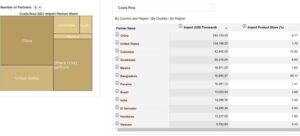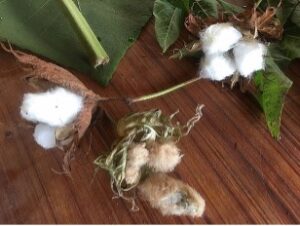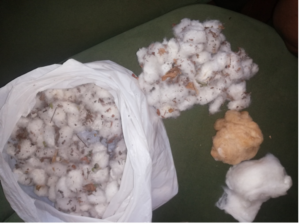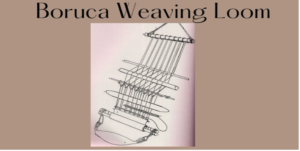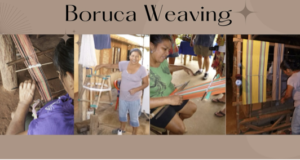Costa Rica sources their fabric textile mainly from China, the United States, Colombia, Guatemala, and Mexico (Textile Industry in Costa Rica, 2023). Although Costa Rica has exchanges with other partnering countries, they mainly stick to these countries as they are known for mass production and the lowest rates. As an illustration, in Figure 14, one can see that the textile industry in China is the largest in importation, followed by the United States and Colombia (Worldbank, 2021). This is why Costa Rica relies so heavily on these countries so they can produce their products at the lowest cost possible and increase their profits. However, Costa Ricans do plant and gather their cotton (SaachiBhatia, 2020), which is locally sourced, and some of the tribes, such as the Boruca, rely on production like this to obtain the principal material of their handmade creations.
The Boruca tribe is known for its exceptional craftsmanship, especially in weaving, using natural fibers to create their yarn (Intercontinental Cry, 2023). They primarily utilize weaving to create bags, belts, purses, placemats, and hats using local cotton and plant-based dyes (Soul Gives, 2023). The weaving tradition is passed down from mothers and grandmothers to younger girls, ensuring its continuation (Boruca Costa Rica, 2023). The tribe’s weaving techniques involve using a back-strap loom, which allows for precise weaving and intricate detailing, resulting in beautiful patterns characteristic of Boruca textiles (World Shibori Network, 2016). Additionally, the Boruca community uses natural dyestuff, such as Achiote bush, Sacatinas leaves, Teak, Turmeric, etc., to create their vibrant textiles (Calderon, 2020). These techniques demonstrate the Boruca tribe’s rich cultural heritage, artistic prowess, and storytelling traditions, highlighting their close interrelationship with their environment and culture. By choosing their handmade products, one can support their community and help to preserve their traditional craftsmanship.
Figure 14
Costa Rica 2021 Import Partner Share
Figure 15
Natural cotton grown in Boruca.
Cotton that was collected by the Boruca tribe.
Figure 16
Boruca Weaving Loom
Figure 17
Boruca Weaving Process
